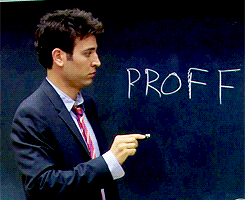#like tumblr and YouTube must be taking the same app making classes cause both of these bastards suck
Text
anyone else got yt’s new app update cause wow does this suck ass :)
#masky says#I’m allowed to bitch and moan on my own account#the history doesn’t even work anymore we can’t even see all of it#it just STOPS#the swiping is now so goddamn sensitive I can barely stay on the screen I want#like tumblr and YouTube must be taking the same app making classes cause both of these bastards suck#not SURPRISING but still annoying as fuck#yes I know the whole ‘ew new things’ is real but I also don’t care :) I don’t like it#don’t make ur app annoying to use its not HARD
0 notes
Text
Hi good evening I'm francine gala of HUMSS-A from Antipolo Rizal,I'm 16 years old please bare with me I'm just new here in tumblr app


I've learned that Empowerment Technologies or E-tech is very important in our daily lives. I also learned that ICT deals with the use of different communication technologies like movile phones, telephone and internet etc. I learned more about mobile technology. I also learned how to be safe online and what are the different types of internet threats.We are becoming more effective upon using the technologies for good purposes because we are aware and knowledgeable of the way on how to behave online and also we become updated to the different accessible sites that we can access and explore to create different online activities.
Introduction to Information and Communications Technologies (ICT)
From what I had learned about this topic, it is because of Information and Communications Technologies (ICT) that we are experiencing a life with less hassle on gathering information and at the same time understanding it. It is also known that with ICT life is made better and the day to day chores are a lot more easier to accomplish that before, and nowadays, the rise of technology is so rampant that it became so special that we human beings started to rely on it and we became very dependent on it. Here in the Philippines, ICT is very welcomed and acknowledged not only by the government and business industries but also by the Filipinos, given that almost every Filipino today has cellular phones, gadgets, and appliances. In addition I have also learned that with ICT you cannot only gather information but also disseminate them to other, for we have so many sites to do so, one type of site is a blogging site that where we can upload our own opinion and knowledge to be seen or read by the so called “netizens”.
Rules of Netiquette
Now I have fully understand that surfing on the internet does not mean you are free to do what ever is it that you wish to do on the internet. keep in mind that internet is know as the “superhighway” of information, therefore if ever there are people who wishes harm upon you may use the information you had given on the online society to threaten you or in the worst case scenario, harm you. Also as a person who uses technology, like computer or smartphone, me and you, might as well all of us should know about the risks we are taking just by being online, and also what the dangers known as “malware” can do to our computers and the like. this is where the safety precautionary measures play its part, as a “netizen” and a computer literate, we must be aware on how to stay safe while we are online and how to prevent these malwares to infiltrate and destroy our devices by following some rules and tips, but these some may mean a lot bigger when the time comes.
Basic Computer Understanding and Skills
Knowing the basics about computer really means a lot, today technology like computer is widely used and being uneducated about computer means being left behind, not only by the trend but also by the benefits we can get by using the computer. Computers are not not only used in the offices anymore but also in homes, schools and even in businesses like internet cafe. Now I’am very thankful to learn even the basics of the computer parts, due to the reason that I am able to use computers with ease and making my task done a lot more easier. Computers are complex devices but if you learn how to use them, you can eradicate the complexity and use it in your own advantage and benefit. Computers have so many parts within a single unit and is divided into two kinds, the software and the hardware that both plays a big role in the computer as a whole, if ever one of their branches are missing then the computer might have a difficulty of functioning and performing certain tasks and might also end on not performing the task at all. that is how crucial a computer can be, as far as my knowledge go.
Microsoft Word
There is only one thing that keeps bugging me the whole time I was thinking about Microsoft Word, and that one thing is definitely unacceptable for me. The thing that I was talking about is, what would happen if this Microsoft Word did not exist at all? Then my answer would be; making a document will be more difficult, its either you type write it, use the Word Pad, find another application or just write it down on paper, imagine the hassle that every individual should undergo if there is no Microsoft Word. But the good thing is, Microsoft Word exist, thus making writing documents a lot easier with its given services and features that is definitely complete in its own class, and with its endless number of pages, you can make a document of a lifetime with Microsoft Word. In addition, Microsoft Word also comes in a mobile version which makes it portable and accessible wherever you are as long as you have your phone or tablet with you.
Microsoft Excel
Does solving large amount of numbers with a lot of coordinates and items bothers you? Well in my case, yes. But worry not, for what I have learned is that with Microsoft Excel, we don’t need to scratch our head every time we are dealing with number, because Microsoft Excel is a tool used for solving mathematics. By the word “mathematics” it means every mathematical problem can be solved using Microsoft Excel, and it is very convenient, you just have to know the right functions and commands then you can just type in the unit of number and press enter and “boom” you then have the answer in an instant that’s how convenient it is to use Microsoft Excel. Judging by its name, Microsoft Excel really is “Excellent!”.
Microsoft Powerpoint
Now this thing here is the Microsoft Powerpoint, a tool that is used to create presentation. If you’re going to ask me what does Microsoft Powerpoint do, then I’m going to tell you, try it on your own, because what Microsoft Powerpoint does is so many that it even outnumbered all my fingers from hand to feet, and there’s no way of explaining them all in just one sitting. Therefore, experience is the best teacher. But let me tell you this short summary about what I understand about Powerpoint, Powerpoint is much more like an assistant during your presentation, it can play video, showcase slides, perform animation, screen recording and much much more. You can name every single thing regarding presentation and Microsoft Powerpoint has it all. I can confidently say that Microsoft Powerpoint is the best presentation creator, and even become the mother of all presentation, but that’s just an exaggeration.
Imaging and Design for Online Environment
It is very fascinating to know that Online Environment is not just all about the User Interface and User Experience, but also for graphical designs. I have learned some of elements about graphical design on the online environment such as balance, emphasis, movement, pattern, repetition, rhythm, proportion, and variety. These elements are all important, for they play their own specific role and they please certain types of viewers. Though not all viewers like a single type or element, then that’s the time the other elements turn to shine. In fact, these elements are the ones used by the most popular websites of different fields and targeted users e.g. Google, Facebook, Youtube, Rappler, and many more. In addition, there is also the so called, infographics which is fun and interesting, just by knowing how you can deliver information in a graphical way. It might be in form of animation or by giving the viewers a test of logic by letting them find out the meaning within a graphic art.
Online Platforms for ICT Content Development
In this topic it is greatly appreciated that you are guided on making your own desired website, like using Facebook, a social media website that allows you share you share your wanted information, but still, with restrictions regarding web design, so if you like to be the boos of your website then WordPress Is the app suited for you. As what I’ve learned, WordPress is a tool that allows you to create your own blogging website, it is you who decide for everything, design, content, elements, dynamics, and anything with regards to a blogging site, name it and WordPress will have it. Now, with highly advance technologies, impossible is most likely becoming “I’m possible”, just like before the 20th Century, web developers and programmers are all professionals, spending how many years just to finish their course of choice, but now? Anyone as long as he or she is a computer literate, can create a website for him/herself by the use of Facebook, WordPress, Blogger, and the like. There is also a term called What You See Is What You Get (WYSIWYG) which means, though you are free to put in anything you like on your own website, you still need to be careful on your content, because your viewers can see everything and there is no such thing as “hidden files” or “privacy” on your website, and that makes you vulnerable to threats, identity theft, and anything that causes you harm.
Creating Infographics Using Piktochart
As what I’ve said during my reflection on the topic Imaging and Design on Online Environment, infographics are so cool that you can disseminate information through graphical arts. Now anyone can make infographics more easier and portable, anywhere you are, you can make infographics through Piktochart with dozens of notable features and functions, like making a collage, editing one or more images at once, and making Gifs, just how fun could that be? I have learned that if you use infographics on delivering information, you can easily get the attention of your viewers rather than reading ad explaining the information onto them, and also note that it is much more better if the audiences or students in other cases learns and adopts more accurate and quick when they have their attention onto the topic given to them. Also it would be kept in their “well of knowledge” once they’re the ones who dug up that knowledge for themselves.
Creating Website Using Microsoft® Word and Jimdo
Creating a website is not anywhere close to easy, if and only if you are using the Notepad or Notepad ++, then you’ll surely end up scratching all over your head, it’s funny but it surely is true. Now here’s the good thing, making a website or webpage doesn’t need to be so difficult and frustrating. Here’s why, you can simply use Microsoft Word to create your own website, and if you would like to add some dynamics, effects and additional function on to it, Jimdo’s got your back. In this lesson We’ve incorporated the use of these application or tools to simplify the process of making a website. You can make a simple but beautiful website in just 5 to 10 minutes, you like to do blogging? Then fortunately you can with your own website and so much more. You can just forget about those codes for a moment and start making your website with the help of Microsoft Word and Jimdo.
Inserting Youtube Videos on Your Blog Post
If you like Blogging so much, then here’s a simple tip to improve and draw the attention of the readers to your blog posts, and that can be done by inserting youtube videos on your blog post. That is what I’ve learned about this topic and whats more interesting is that you can accomplish this task in 6 easy steps and you’re already drawing a lot of readers and viewers onto your blog posts. By adding a multimedia content on your blog, you’re making your posts more interesting and eye catching to the readers, and aside from that you’re making your Blogging site leave a big impact on the social society. Thus, making every single netizen want to come back and read your blogs every now and then. That’s the importance of putting a multimedia content on your blog posts, which also shows a significant effect and noticeable change that bring positive vibes on your blogs.
The Role of ICT in the Philippine History
It is just new to my knowledge that ICT was widely used during the historical events in the Philippines. I learned that ICT does not only makes things or chores a lot more easier, but it is also able to alter the reality and change the flow of history, just like what happened in the EDSA (People Power Revolution). As the time is moving forward, so as the ICT advancement is moving forward, developing and evolving. At first Radio Broadcasting was used, after that, the text brigades, and then the use of social media sites to spread the advocacy and persuade the people to join a campaign or protest. In addition, ICT was not just used for protests and campaign but also to be a form of communication and tracker for the loved ones of the Overseas Filipino Workers OFWs in times of calamities.
0 notes
Text
Audience Studies (3P18) Blog Post #1
Week #1
The first week of this class really got me thinking about what is considered to be an audience. When I walked into this class I wasn’t sure what it was going to be about, I didn’t understand how an entire class could be based around studying audiences. For me, when I think of an audience, the first thing that comes to mind is a large crowd watching and/or listening to something together. However, this is not the only definition of an audience and after just one class, I realized audiences can be many things that I had never thought of before. We can be considered part of an audience in everyday life, an audience to everyday things both big and small, not just when we are at events like concerts or speeches.

Sitting in lecture is one example of where we take on the role of being an audience member. As a student we have the responsibility to attend our lectures and listen attentively to what the professor is teaching us. In this case, being an audience member is more work than at something such as a concert. We are paying to be there to obtain knowledge in a field of our interest. We must listen to, and make notes on the information presented to us because once that lecture is over, it’s over for good. If we were not present as an audience member, we have missed that experience.
In lecture, audiences were defined as the act of hearing or listening, as well as a group of listeners, spectators, admirers, or devotees. It was also stated how audience is a role that people temporarily perform. Just as I mentioned how when we are the audience to a professor in lecture, we must perform that role a certain way to achieve our academic goals. It was also mentioned how audiences are changing from many years ago to how they are perceived today. In today’s society there are even more meanings to the word audience because of advancements and popularity of technology. We can now be part of an audience to something that we are not physically attending. People all over the world can come together as an audience to watch or hear the same thing at the same time through the use of technology. With nearly everyone in our generation owning a mobile phone, we are playing the role of an audience member nearly everyday. People may watch videos on sites such as Youtube or Netflix on their phones at any point in the day and become an audience member for that moment.

Both of these points of how being a student in lecture is an example of audiences, and the use of technology to become an audience member, made me think of the use of TopHat. This class we will be using an app called TopHat to participate in lecture through our phones or laptops. I have used this once before in a class a few years ago but I think it suits this class especially well. Since the class is about audiences, it makes sense to have the entire class participating together as an audience. The professor will pose questions to the class through the app which will allow us to test our own understanding as an audience member. It also allows the entire audience to become more interactive with the professor, making each student’s role that much more important. That is also interesting because at the moments where the students are participating and discussing, the roles are reversed. As students share their thoughts with the professor, she becomes an audience member for that moment.
Overall, I am looking forward to this course as I think we will learn some interesting information about audiences and how it portrays to our lives in ways I wouldn’t have thought of before this course. Learning about audiences both old and new and about audience-related theories will be helpful in my Business Communication program. Audiences can be applied to many aspects in both business and communication studies. I think these weekly blog posts will be a great way to remember and understand lecture/seminar materials as well as to go through the textbook and readings to connect it all together each week. I have decided to create a Tumblr for my blog posts because I have used it in the past so I understand how it works. This will allow me to create a creative blog that hopefully has both good content from the course as well as creative visuals.
Week #2
This week was the start of looking at what an audience really is and how audiences have changed throughout history. The textbook defined audiences in two ways, an information-based notion and a meaning-based notion. The first describing audiences as a “transmission view of communication” (Carey, 1989). The second explains how feedback between the sender and receiver creates meaning which is more significant than the actual transmission of the message. The meaning-based definition also seemed similar to what Sonia Livingstone wrote about in this week’s reading. She explained the importance of the interview process where there is a back and forth between the interviewer and interviewee. Understanding these definitions of audiences, as well as the four main topics we discussed in lecture, got me thinking about a particular audience experience I had over the summer.
The four things we discussed in lecture to make sense of audiences throughout history, were size, danger, Sullivan’s “trilogy”, and power. The definition of an audience and points on these four topics reminded me of watching the final Raptors game with my friends over the summer. By watching at home, the game was transmitted to us through the television as well as through social media and people who were at the game in person. In this case, both audience definitions fit. In regards to the topic of size, this audience could be seen as both mediated and unmediated depending on how you look at it. Me and my friends sitting together watching the game was a small, unmediated audience. However, we were part of a larger, mediated audience that were watching the same thing at the same time. There were people at the game, at “Jurassic Park” gatherings in various cities, and other people watching at home. We could easily connect with the rest of the audience through social media. This is why mediated audiences are much more prevalent today than they were in the past.
On the topic of danger, it was discussed how Greek audiences and audiences in the 17th or 18th century acted. There was a shift from the talkative and unruly Greek audiences to a quieter yet still over active audience atmosphere in the 17th and 18th century. By the 20th century, there were worries on how the media might degenerate audience and how there was preparation for more mediated audiences. Going back to the Raptors game, the police had to come up with strategic plans to deal with such large crowds especially one were emotions would be high depending on whether the team won or lost. In the 20th century, audiences that behaved in a rowdy manner were seen as the lower class, whereas the upper class did not tend to behave in such a manner.

Sullivan’s “trilogy” is where James G. Webster (1998) argues that there are three basic models of the media audience, outcome, mass, and agent. The one that most applies to my audience experience is audiences-as-mass. This sees audiences as, “a large collection of people scattered across time and space who act autonomously and have little or no immediate knowledge of one another” (Sullivan, p.6). This essentially describes exactly what was going on during the Raptors game. With a Canadian team playing an American team, there were people scattered across many different cities all audience members to the same game. Although no one in the audience had any knowledge of each other (apart from the people they were with), everyone took two sides to cheer for one of the teams. Strangers all across Canada joined together as one audience to see the Raptors win.

Lastly, we learned about power, the ability of one actor to alter the decisions and experiences of another actor. Some audience members are more powerful than others causing certain individuals to support ruling systems even when it may not be in their best interest to do so. This ties back to the Livingstone reading where one person is seen as the interviewer and one is seen as the interviewee. In my case, the Raptors essentially had all the power over the audience and managed to captivate the city of Toronto as well as many others. This power may have altered certain individuals actions such as the way fans were acting in the streets during both wins and losses. Between the power the team had over the audience and people’s need for approval to fit in to this event, certain audience members may have acted in a way that they normally wouldn’t.
The final Raptors game was a fun experience and it was interesting to see such a large audience connected through a basketball game. It is a great example of how audiences have changed over the years, yet there are still similarities to the traits describing audiences both past and present.
Week #3
An important topic of this week’s lecture and reading was the topic of mass media. We examined Mass Society Theory, Dependency Theory, and Brown’s four processes of audience involvement. For me, the audience experience that came to mind regarding these topics was the current federal election debates. With the election going on right now, each of us are an audience to the things we are watching and hearing through the media about each candidate. As we learned this week, mass media can play a huge role in changing the way audiences view a certain topic or in this case, a certain candidate or party.
In lecture it was stated that media effects are important because everything we hear as an audience has a story and stories matter, but who is telling the story also matters. When we are hearing things through the media about the election, we have to take into consideration who is telling the story because it can be twisted by one party to make another look worse. According to Lazarsfeld mass media involves opinion leaders and people in contact with those leaders. He found that voters are not so much influenced by the media as they are reinforced. Some things that could influence someone to be persuaded are their personality, the source of credibility, cognitive consistency, and cognitive dissonance. When it comes to elections, most people already have a party in mind that they tend to vote for because they fit their wants and needs the best. However, mass media could play a role in changing their minds. As an audience to the election debates and campaigns, we must listen to the points being made from all parties. We also must take into consideration what media source we are using to get our information and how credible it is.

Mass Society Theory builds on Ferdinand Tönnies (1957) claims that people who live in an modern, urban environment have a more isolated nature. It examines the role that mass media has on such a society, that this kind of media “have the capacity to directly influence the attitudes and behaviours of individuals” (Sullivan, p. 31). Around election time, certain facts are often released by opposing parties to try to influence voters to make a different choice than they were planning. For example, this year photos were released of Justin Trudeau dressed up in blackface so people who may have been planning to vote for him may now view him as racist. Modern audiences in an urban setting who have been cut off from cultural traditions and social institutions are most vulnerable to this kind of media influence. Especially with the popularity of social media in the modern society, this is where many people are getting their information.
Dependency Theory by Sandra Ball-Rokeach and Melvin DeFleur explains cognitive, affective, and behavioural effects on society and media. Also how society, media, and audiences all effect each other. We become more dependant on the mediated message as there is common access to stories and information. With the election, I would say audiences have a high dependancy on media information and stories. Personally, I did not know a lot about each party’s platform so I am relying a lot on media coverage to make a decision.
The problems surrounding mass media are things such as stereotypes and media propaganda. Each political party tends to have a certain stereotype based on the way they have performed in the past. We already have expectations of what each candidate will be doing before we see their platform in reality. Media propaganda promotes certain ideas and if this propaganda is shown to the audience over and over again, it can easily sway voters opinions.

This week’s reading stated that, “During the past 60 years, the influence of mediated personalities on audiences has substantially increased” (Brown, 2015, p. 259). This includes political leaders, we become attached to their personalities or personae. Audience involvement with these media personae includes four processes: transportation, parasocial interaction, identification, and worship. Some audience members are highly transported, meaning that they are very cognitively and emotionally involved. These people would feel a strong attachment to a certain candidate and would likely share their view with others to get them to vote for that person as well. This could also lead to a parasocial interaction where they have a one-way relationship through media with the politician. I wouldn’t say I am highly transported or have a high parasocial interaction as an audience member in this case as I am not extremely involved in politics or the election. However, I believe myself and most audience members experience a certain degree of identification. We all take on some of the beliefs, attitudes, and values of these candidates. This is what allows us to feel a connection to one person more than the others to place our vote. The last process is worship, which again I wouldn’t say I feel strongly enough to feel as though I worship any candidate but some audience members may feel this way.
At the end of the day mass media does play a huge role in the way and audience perceives something especially when it comes to politics. When there is an election, we are an audience to many different sources of information through the media. We must use our own knowledge and instincts to decide what stories are credible and valuable versus what may propaganda attempting to change our mind.
Week #4
This week was all about the public and evolution of public opinion. Over the years the way public opinion is shared and measured has changed drastically with advancements in technology and the popularity of social media. Back in 4th century BCE, Plato respected the public making decisions but was skeptical that they would do so in their own best interests. By the middle ages, the King was the voice of the people. In today’s society, public opinion is often shared across social media. Anyone with access to the internet can share their opinion with people worldwide and it is easy for opinion to spread quickly. The textbook defines public opinion as, “group consensus about matters of public concern which has developed in the wake of informed discussion” (Graber, 1982, p. 556). Who is actually considered a member of “the public” is always changing.
Thinking about public opinion and this week’s reading by Neubaum and Krämer, got me thinking about recent controversial opinions shared online. A big issue over recent years is the issue of gun control in the United States. Even though I live in Canada, I am still an audience to this issue through social media. The issue still concerns me because although we have stricter gun control laws, it is upsetting to see others living such a similar life facing these issues everyday. In the past, the public was not able to share information to a large audience as easily as they can today. We may not have seen so many shootings in the news if they were not close to our home.
Without social media being as prevalent it was easier to measure public opinion in the earlier centuries. In the 19th century, there was a rise of quantification, where public opinion was measured numerically. This includes things such as polls especially in regards to politics. After this there was an increase in using surveys as a method of measurement. These could be conducted systemically or randomly to get an idea of public opinion. However, these kind of measurements can predict the wrong outcome, such as when they predict the wrong politician will win. Today, while these methods can still be used it is harder to measure public opinion because there are more media spaces for the public to share their opinion. Going back to the issue of gun control, personally I have been an audience to people’s opinion on that for years and I’m sure many other people have been as well. Every time there is a shooting it is brought up again across social media. As an audience member, I have seen opinions on both sides but it is hard to measure exactly which opinion is more popular. I tend to see more people in favour of stricter gun control laws, yet the people in power leave the laws as they are so that to me is interesting. While it seems public opinion has changed, as we no longer have a King making all the decisions for the public, in a way, it remains the same.

In regards to agenda setting theory and framing, the media chooses the way we see stories by making certain things seem more important than others. This also leads into the idea of the “spiral of silence” which defines people as social creatures who generally want to fit in. We use the media to find out what other people think and tend not to speak out against the public’s more popular opinion.
This topic was brought up again in the reading where Neubaum and Krämer examined what people fear about expressing the minority opinion both online and offline. They found that our “silence” differs online versus offline, that people face a greater fear of being personally attacked on the internet than face-to-face. To me this was somewhat surprising, as an audience to the back and forth of gun control opinions, I find people are very willing to share both sides online. Even watching debates on other controversial topics, I find many people share their opinion online even if it is the minority opinion because nothing can be physically done through the internet. Realistically, the public can share their personal opinion online and while hundreds or thousands of people may disagree, they are not physically there to do anything to that person. I would’ve thought there would be a greater fear for people sharing their opinion face-to-face because if someone was very passionate and upset, there could be physical bodily harm. Online people can only be attacked with words. This week’s lecture and readings made me think about this more and now I can see how online people may be attacked over and over for their opinion and nothing really goes away once it is posted online. Whereas face-to-face it’s unlikely someone will physically attack you and you can really just walk away from the conversation and it’s over with.
This week was particularly interesting to me and really made me think about how public opinions are shared, viewed, and measured. Everyday we are an audience to many online and offline opinions. When it comes to controversial issues like gun control, the public can go both ways and public opinion may change over time but certain people in power may not so easily change their opinion.
Week #5
I found this week’s topics to be the most interesting so far because it applied audiences to marketing which has always been a topic of interest to me. We learned about how Walmart monitors purchasing behaviour of their customers so that they know what products to have at which locations. This lead into the two fundamental principles this week which are as follows. Surveillance mechanisms have been put in place to measure individual’s thoughts, attitudes, and behaviours. Powerful institutions and organizations use these tools to advance their own goals, which brings up issues of power. Along with Walmart’s surveillance we talked about Neilson and how they use surveillance for things like ratings and marketing. When I was younger, my family and I actually participated in a Neilson ratings study by simply wearing pagers when we were watching television and it picked up on what we were watching. This is a direct example of being an audience member and a company using it for their own goals. It also ties into this weeks reading about the Neilson company.

As outlined by Dallas W. Smythe in his “blindspot” debate, mass media produces products such as television shows, radio shows, etc. to market to consumers. However, the viewers become a product themselves that the media corporations can market to advertisers. This is called the audience commodity. When I was an audience member wearing the pager sent by Neilson, this is essentially what was going on. While I can see how it can be seen as an issue that companies use their consumers for their own gain, I personally don’t see the harm in most of these cases. It didn’t require any extra effort from me to watch the television I normally watch, and Neilson got the information they needed. In the case of Walmart’s surveillance, consumers weren’t affected, they were buying what they usually buy, and Walmart was using that information to help in their marketing and stocking.
The reading this week by Karen S.F. Buzzard explained market information regimes specifically Neilson’s contribution to this system. The article defined market information regimes as, “systems of assessing market performance that are publicly available and are used by stakeholders in the market to assess their performance and the performance of their competitors” (Buzzard, 2015, p. 512). Neilson’s rating system falls under this. It goes on to explain Neilson’s methods and how they must be the most efficient with costs and time to beat their competitors who also produce these kinds of ratings. Personally, I found Neilson’s method to be good because they used real people, such as myself, to be their audience. This way there was no bias and all I had to do was wear a pager, making it easy as an audience member. While this may be using audience as an object, again I don’t think it is necessarily a bad thing. Especially when these ratings are made public to stakeholders as mentioned in the article because that is helping multiple companies without much effort from the audience.
So what is the problem with viewing audiences as an object? That’s where the five question approach comes in. This includes the following questions. What if our “choices” are not really choices? They may just be a result of target marketing specifically target to you by media ratings. What if we’re doing all the work, even when we think we’re not? As I said, in my cause as an audience, it really didn’t require any work from me. In cases where companies like Walmart are using surveillance mechanisms, it also isn’t requiring extra work. What if ratings and marketing have turned us into data? In a way, we are data in this case as an audience but I don’t see that as a bad thing necessarily. What if ratings and marketing have made us unhappy? What if they have made the planet unhealthy? These last two questions I could see both sides of the debate but personally I don’t think ratings cause this much of an issue to us as an audience.
This last week of my Blog #1 was a lot of my own opinion on this topic and I can see how some people may disagree. I just think that in today’s society we know that there is a lot of surveillance in our everyday lives so it is not surprising that large corporations use this to their advantage. I think as long as we as an audience aren’t harmed by what they are doing, it is a great way for them to target market their products to us.
0 notes